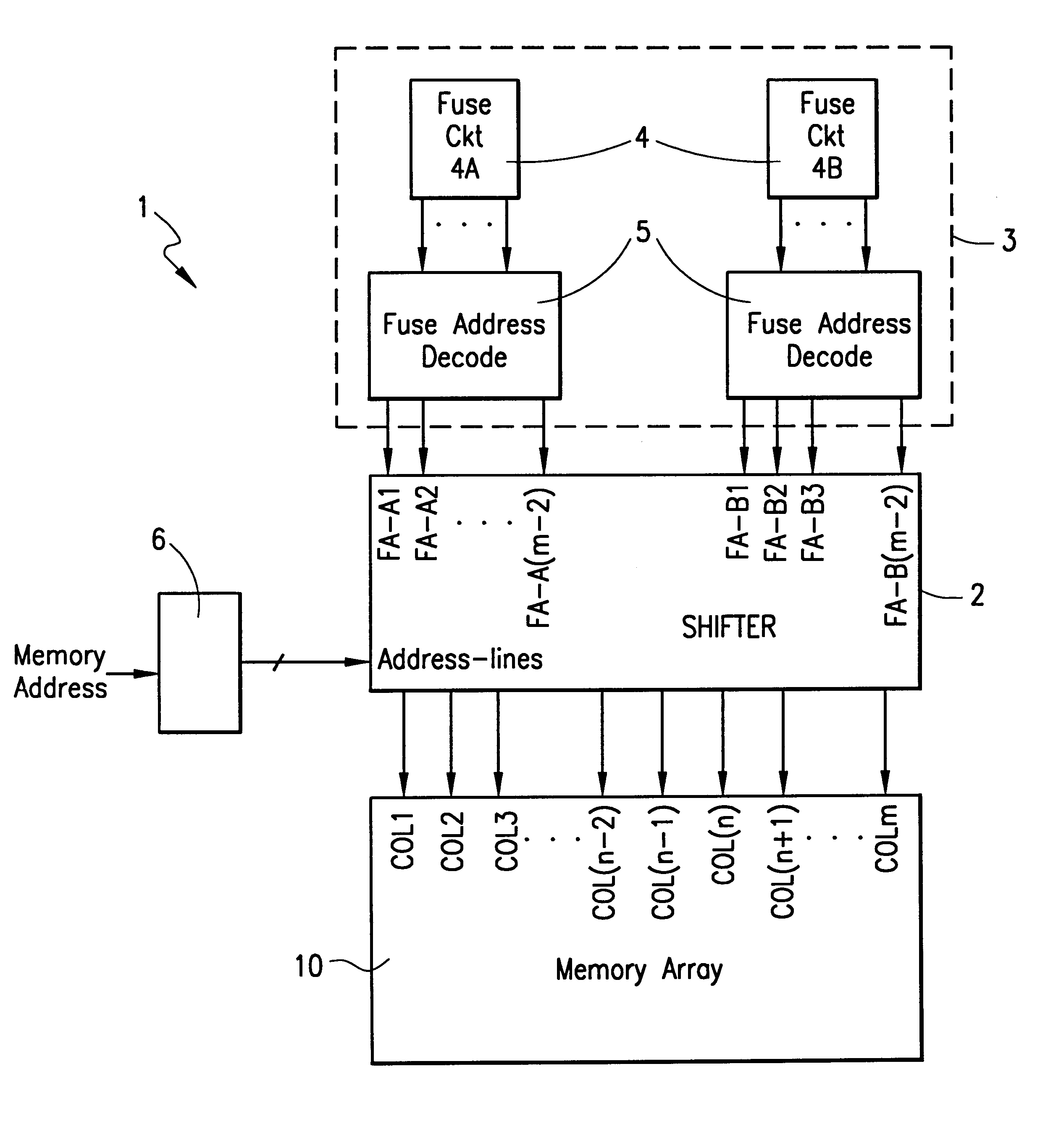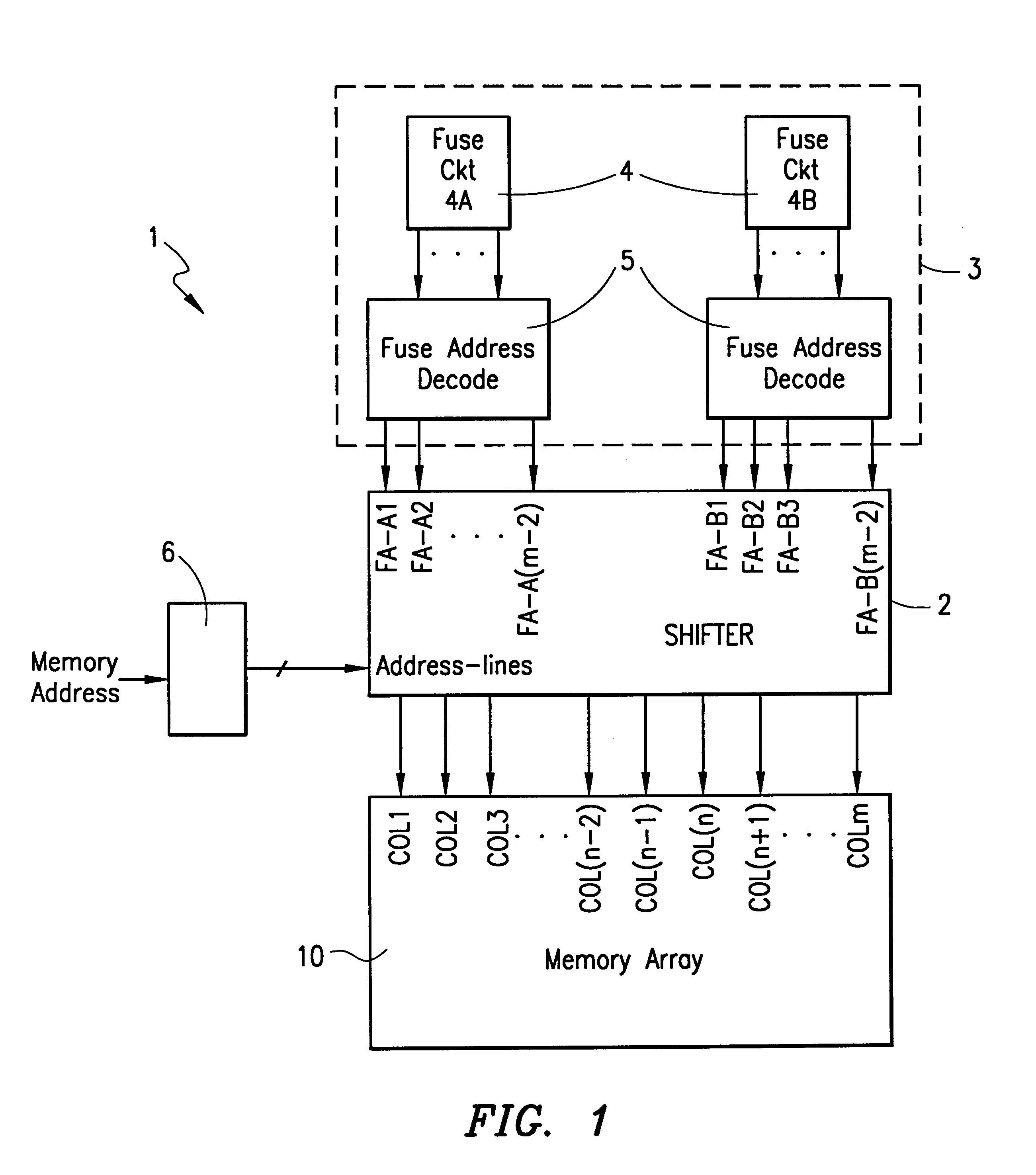Memory redundancy device and method
a memory redundancy and circuit technology, applied in the field of redundancy circuitry for semiconductor memory devices, can solve the problems of significant reduction of achieve the effects of reducing the processing yield of large-scale memory arrays, improving the processing yield of memory chips, and reducing chip manufacturing costs
- Summary
- Abstract
- Description
- Claims
- Application Information
AI Technical Summary
Benefits of technology
Problems solved by technology
Method used
Image
Examples
Embodiment Construction
Referring to FIGS. 1-3, there is shown a redundancy circuit 1 which is suitably employed to indicate and effectively bypass row or column lines associated with a defect, such as a manufacturing defect. Redundancy circuitry 1 is adapted to directly drive the row or column lines of a memory array 10. Memory array 10 includes additional (redundant) row or column lines for use upon discovery of a row or column line being associated with a defect. For purposes of simplicity, redundancy circuit 1 will be described below in conjunction with the column lines of memory array 10. It is understood that the present invention may be suitably employed to effectuate the replacement of defective memory row lines of memory array 10.
Redundancy circuit 1 preferably includes a shifter circuit 2 and a programmable circuit 3. Programmable circuit 3 is selectively programmed to indicate one or more previously discovered column lines having a defect associated therewith. Shifter circuit 2 controls the acti...
PUM
 Login to View More
Login to View More Abstract
Description
Claims
Application Information
 Login to View More
Login to View More - R&D
- Intellectual Property
- Life Sciences
- Materials
- Tech Scout
- Unparalleled Data Quality
- Higher Quality Content
- 60% Fewer Hallucinations
Browse by: Latest US Patents, China's latest patents, Technical Efficacy Thesaurus, Application Domain, Technology Topic, Popular Technical Reports.
© 2025 PatSnap. All rights reserved.Legal|Privacy policy|Modern Slavery Act Transparency Statement|Sitemap|About US| Contact US: help@patsnap.com



